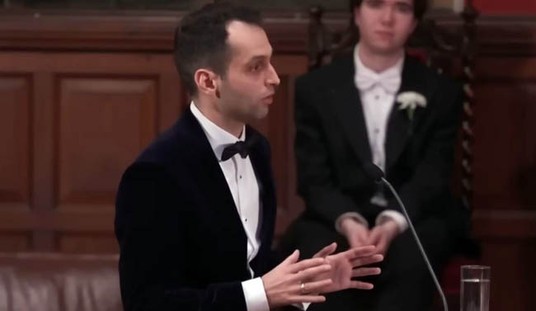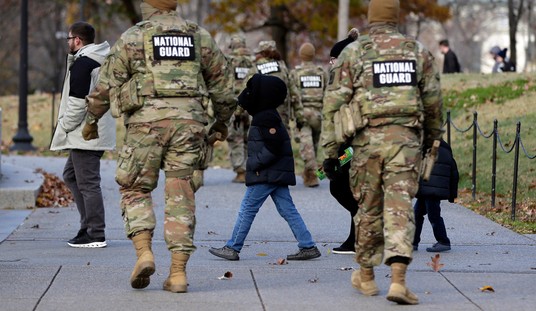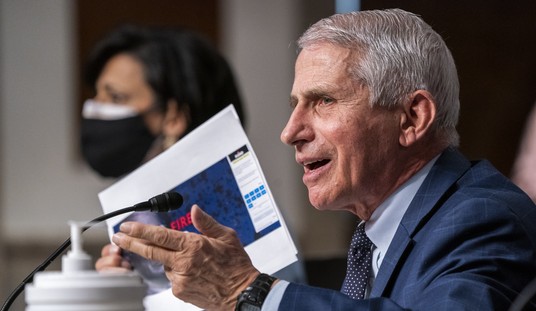From China by way of Europe, I should say. People are dunking on this Times story for supposedly obscuring that fact on Beijing’s behalf. “Turns out the milk in the fridge came from Walmart, not a cow,” said a Twitter pal, summarizing the critique. But the Times acknowledges the ultimate origin in the piece: “The deepest branches of the [virus’s genetic] tree all belong to lineages from China.”
Their point in emphasizing that the virus that made its way into NYC was a strain common in Europe isn’t to run interference for China (I hope), it’s to question Trump’s containment strategy. The president has pointed repeatedly to the fact that he banned travel from China on January 31 as proof that he was taking the threat seriously. He didn’t ban travel from Europe until mid-March, though, after cases in Italy had exploded. The NYT is asking what might have happened if he’d shut down travel from Europe a month earlier in recognition of the fact that the virus had already escaped China’s borders. The virus would have arrived in New York eventually one way or another, but maybe late enough that stay-at-home orders could have drastically reduced the spread in March.
How would the media have greeted a European travel ban in mid-February, though? Would Trump have been praised for his better-safe-than-sorry approach at the time, or would he have been savaged for overreacting and risking economic damage by indulging his instincts towards tight borders before a serious threat had emerged in Europe?
Dr. Heguy and her colleagues found some New York viruses that shared unique mutations not found elsewhere. “That’s when you know you’ve had a silent transmission for a while,” she said…
[R]esearchers at Mount Sinai started sequencing the genomes of patients coming through their hospital. They found that the earliest cases identified in New York were not linked to later ones.
“Two weeks later, we start seeing viruses related to each other,” said Ana Silvia Gonzalez-Reiche, a member of the Mount Sinai team.
Dr. Gonzalez-Reiche and her colleagues found that these viruses were practically identical to viruses found around Europe. They cannot say on what particular flight a particular virus arrived in New York. But they write that the viruses reveal “a period of untracked global transmission between late January to mid-February.”
Remember that COVID-19 didn’t explode in northern Italy until late February, after the outbreak was seeded at a soccer match in Milan on February 19. To keep it out of New York, Trump would have had to have acted early enough that the threat of a major epidemic in Europe, not to mention the U.S., was still somewhat hypothetical. Even if he had banned travel from Europe, people who’d recently been there would have continued to enter the U.S. from other continents.
Really, the question posed by the Times piece is this: How soon will the president be expected to act in the *next* epidemic? Given the human and economic toll exacted by coronavirus, a new virus identified in China 10 years from now, say, might trigger a cascade of preemptive national lockdowns around the world for weeks on end to freeze everyone in place while Beijing attempts to get it under control.
But asking “How soon should we have banned travel?” is asking the wrong question. Absent a global travel ban and very secure borders, a highly contagious virus will find its way in eventually. The right question is “Why wasn’t the entire U.S. public health system, from the CDC to the FDA to public and private labs, scrambling urgently in January to ramp up testing given the certainty that the virus would soon arrive?” We didn’t need a global travel ban to nip a major outbreak in the bud in New York before it got rolling. We needed testing. That was, is, and probably will remain the cardinal failure in the U.S. response. (If there’s a more consequential failure still to come, I shudder to think what it might be.) Thousands have died because of it, tens of thousands will die because of it. It’ll be years before our economy recovers from it.
Even that’s too easy, though. Read this New York Daily News story about activity in a courthouse in Brooklyn proceeding normally on March 12, coincidentally the very day that Trump finally banned travel from Europe. The threat to New York and the wider U.S. was well known at that point but lawyers, spectators, and courtroom staff crowded in together as usual. Result: The judge who presided that day is now dead. Three other judges are sick. Can’t blame the lack of testing on a cavalier attitude about basic precautions once the risk was known. The public took the threat too lightly as well, even after it had reason not to.
Less than a month later, this is what now passes for good news in NYC. A declining rate in the share of people testing positive … that’s nonetheless north of 40 percent.
This continues to follow a very predictable course, where the share of tests that come up positive in NY has declined a bit each day. State just posted its data and 40.2% of newly-reported tests were positive, down from 41.7% yesterday & 48.1% a week ago.https://t.co/MtU6toy8TO https://t.co/hAJyXMnhnX
— Nate Silver (@NateSilver538) April 9, 2020
Exit question: Is there a way to get a sense of the size of a “hidden” local outbreak even in the absence of widespread testing? According to a new study highlighted by Stat, there might be. One word: Poop.









